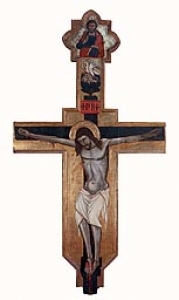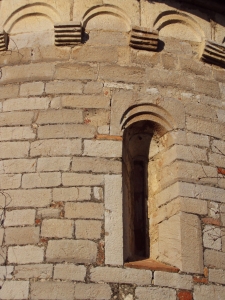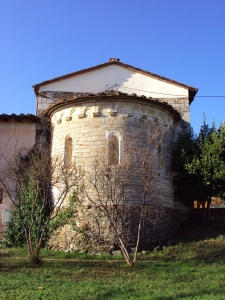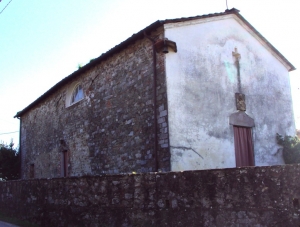
Information
Foundation:
XII secolo
District/Location:
Lucca, località San Lorenzo di Moriano
District:
Piana di Lucca

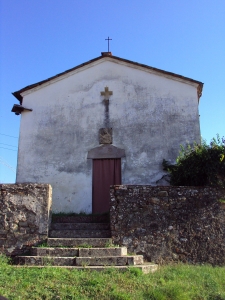
The small church of Saint Lorenzo of Moriano presents today, with its plastered façade, an aspect that hardly suggests its medieval origin, but it still distinguishes its layout and inserts it in a group of medieval Lucca churches with very similar characteristics .
Via della Chiesa XXVII, 643, 55100 S.Michele e Lorenzo
The church of San Lorenzo, in the center of the homonymous village now merged with the adjoining San Michele, is a small single nave church with abisde that conceals its medieval layout behind the façade plastered in more recent times. Built in its present form during the twelfth century, it was like the other churches in the area under the jurisdiction of the parish church of Sesto, as witnessed by the Rationes Decimarum (the list of tithes to be paid to the pontiff) of 1260. The church can be associated with others of the same era present in the Lucca countryside, such as the church of San Lorenzo in Corte di Brancoli: this is suggested by the identity of the plant - with a single nave and apse where three single-light windows open - but also some constructive and decorative details, such as the perfectly squared ashlar masonry and the double cutting of the hanging arches and the single-arched archway. In 1468 the church lost its dignity as a parish and was joined to the nearby church of San Michele, which since then added to its own the dedication to San Lorenzo. On that occasion, part of the San Lorenzo furniture was also transferred to the new church: a large painted Cross was part of it - it is more than three meters high - from the second half of the fourteenth century, which reached us without the side boards and the suppedaneo. Instead, the cymatium is preserved, with the depiction of God the Father blessing; immediately below, we find the image of the pelican that feeds the young with its own flesh, a symbol of Christ's sacrifice. The cross was restored in the early sixties of the twentieth century and, more recently, in the early nineties. Also the church of San Michele, where the 14th century cross is still preserved today, arose in the Middle Ages, but the traces of this origin disappeared in the course of substantial restoration and expansion interventions, among which the change of orientation of 1734.
Scopri altre attrazioni vicino a Saint Lorenzo of Moriano
See allYou may also like..
See allFind more
0








